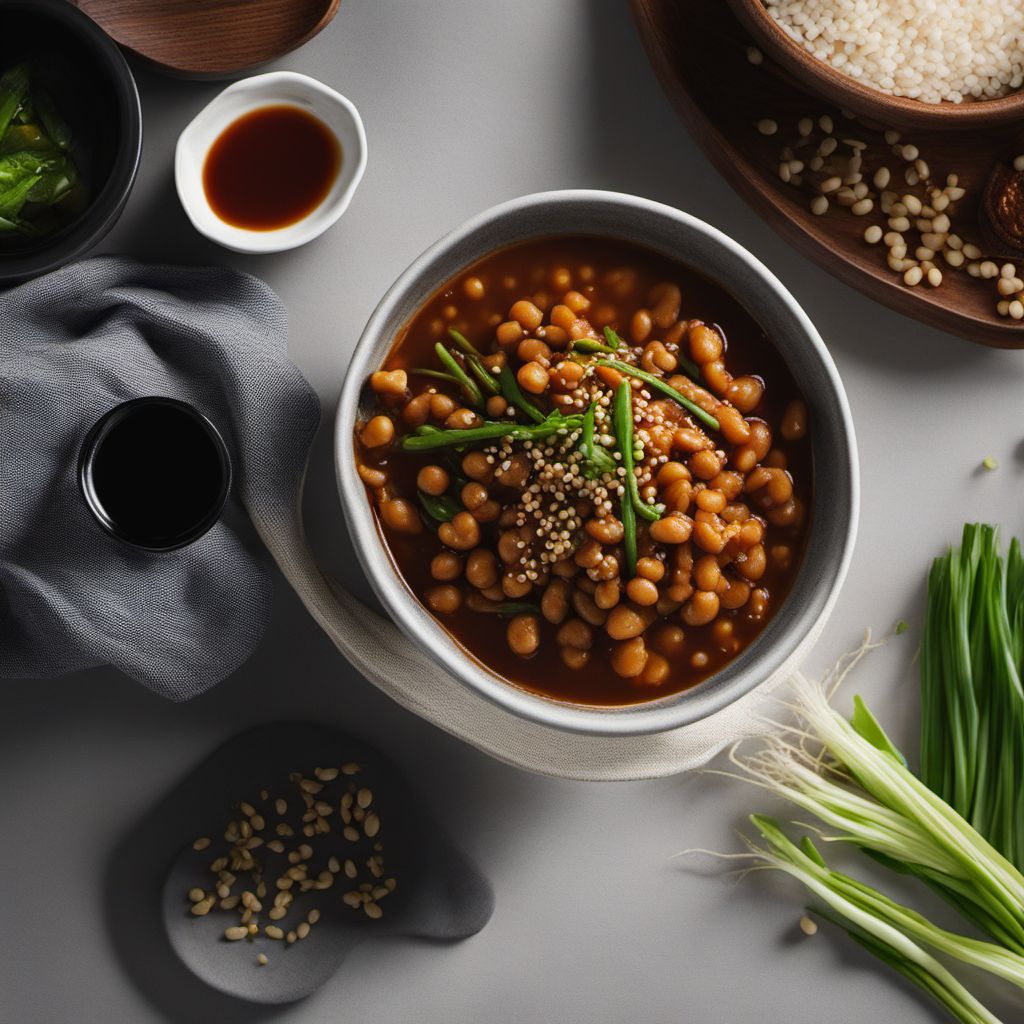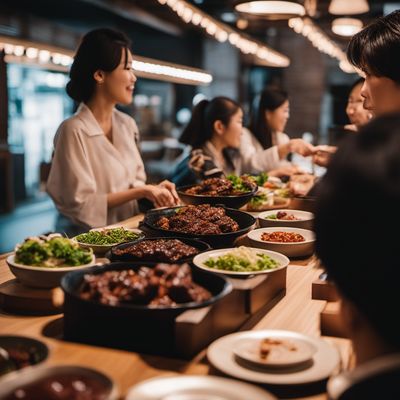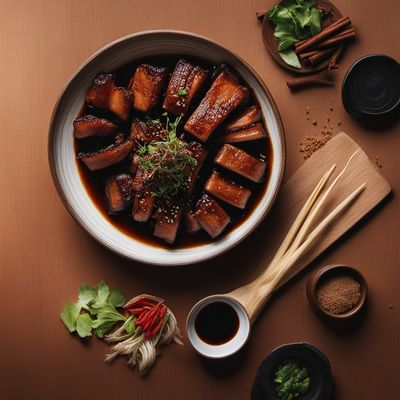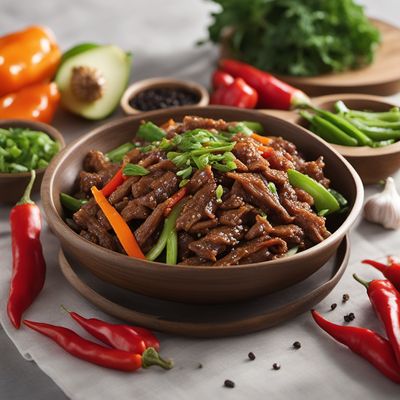
Recipe
Kongjaban: Korean Soy Braised Soybeans
Umami Delight: Korean Soy Braised Soybeans
4.6 out of 5
Indulge in the rich flavors of Korean cuisine with this authentic recipe for Kongjaban. This dish features tender soybeans simmered in a savory soy-based sauce, creating a delightful umami experience.
Metadata
Preparation time
10 minutes
Cooking time
1 hour 30 minutes
Total time
1 hour 40 minutes
Yields
4 servings
Preparation difficulty
Easy
Suitable for
Vegetarian, Vegan, Gluten-free, Dairy-free, Nut-free
Allergens
Soybeans
Not suitable for
Paleo, Keto, Low-carb, High-protein, Atkins
Ingredients
-
2 cups (400g) soybeans 2 cups (400g) soybeans
-
4 cups (950ml) water 4 cups (950ml) water
-
1/4 cup (60ml) soy sauce 1/4 cup (60ml) soy sauce
-
2 tablespoons (30ml) mirin 2 tablespoons (30ml) mirin
-
2 tablespoons (30ml) honey 2 tablespoons (30ml) honey
-
2 cloves garlic, minced 2 cloves garlic, minced
-
1 teaspoon sesame oil 1 teaspoon sesame oil
-
1 teaspoon sesame seeds, for garnish 1 teaspoon sesame seeds, for garnish
-
2 green onions, thinly sliced, for garnish 2 green onions, thinly sliced, for garnish
Nutrition
- Calories (kcal / KJ): 250 kcal / 1046 KJ
- Fat (total, saturated): 5g, 0.7g
- Carbohydrates (total, sugars): 40g, 10g
- Protein: 15g
- Fiber: 10g
- Salt: 2g
Preparation
-
1.Rinse the soybeans under cold water and drain.
-
2.In a large pot, combine the soybeans and water. Bring to a boil over high heat, then reduce the heat to low and simmer for 1 hour, or until the soybeans are tender.
-
3.In a separate bowl, whisk together the soy sauce, mirin, honey, minced garlic, and sesame oil.
-
4.Drain the cooked soybeans and return them to the pot. Pour the sauce mixture over the soybeans and stir gently to coat.
-
5.Simmer the soybeans in the sauce over low heat for an additional 30 minutes, allowing the flavors to meld together.
-
6.Remove from heat and let the dish cool slightly.
-
7.Garnish with sesame seeds and sliced green onions before serving.
Treat your ingredients with care...
- Soybeans — Make sure to rinse the soybeans thoroughly to remove any impurities before cooking.
Tips & Tricks
- For a spicier version, add a pinch of Korean red pepper flakes (gochugaru) to the sauce mixture.
- Adjust the sweetness by adding more or less honey according to your taste preference.
- Serve Kongjaban as a side dish alongside steamed rice and other Korean banchan (side dishes) for a complete meal.
- Leftovers can be stored in an airtight container in the refrigerator for up to 3 days.
- To reheat, gently warm the dish in a microwave or on the stovetop, adding a splash of water if needed to prevent drying.
Serving advice
Serve Kongjaban as a side dish or as a topping for steamed rice. It pairs well with other Korean dishes such as bulgogi, kimchi, and japchae.
Presentation advice
Arrange the soy-braised soybeans in a shallow dish, allowing the glossy sauce to coat each bean. Garnish with a sprinkle of sesame seeds and sliced green onions for a pop of color.
More recipes...
For Kongjaban
For Korean cuisine » Browse all
More Korean cuisine dishes » Browse all

Nude-gimbap
Naked gimbap
Nude-gimbap is a Korean dish that is similar to sushi rolls. The dish is made with rice, vegetables, and meat or seafood, all wrapped in seaweed....

L.A. Galbi
L.A. Galbi is a Korean dish made with beef short ribs marinated in a sweet and savory sauce. It is a popular dish in Korean barbecue restaurants.

Kalbi
Kalbi is a Korean dish that consists of marinated beef short ribs that are grilled or broiled. It is typically served with rice and a variety of...






